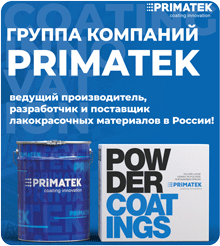Безопасность эпокси-полиэфирных порошковых красок PEKA
Safety Data Sheet of Epoxy-Polyester
1. IDENTIFICATION OF THE MATERIAL AND SUPPLIER
Product Name : Epoxy-polyester Powder Coating
Recommended Use: Applied by electrostatic spray.
Supplier: Peka Chemie Industrial Co.
Zip code: 18341-73355
Street Address: No.TM55, BooAli Sina St., Baharestan Blvd., 4th Phase of Shams Abad industrial Town, 35th Km Qom - Tehran highway -Iran
Telephone Number: +9821-83824
Fax: +9821-83203496
2. COMPOSITION/INFORMATION ON INGREDIENTS
| Components | CAS Number | Proportion | Risk Phrases |
| Synthetic polymer(s) | - | 30-60% | - |
| Pigments | - | 10-<30% | - |
| Ingredients determined not to be hazardous | - | to 100% | - |
3. HAZARDS IDENTIFICATION SUPPLIER
Risk Phrases:
Harmful by inhalation and if swallowed. Irritating to eyes. May cause sensitisation by inhalation and skin contact. May cause heritable genetic damage.
Safety Phrases:
Do not breathe dust. Avoid contact with skin and eyes. Wear suitable protective clothing and eye/face protection.
Poisons Schedule:
None allocated.
4. FIRST AID MEASURES
Inhalation:
Remove victim from area of exposure - avoid becoming a casualty. Remove contaminated clothing and loosen remaining clothing. Allow patient to assume most comfortable position and keep warm. Keep at rest until fully recovered. Effects may be delayed.
Skin Contact:
If skin or hair contact occurs, immediately remove any contaminated clothing and wash skin and hair thoroughly with running water. If swelling, redness, blistering or irritation occurs seek medical assistance.
Eye Contact:
If in eyes, hold eyelids apart and flush the eye continuously with running water. Continue flushing until advised to stop by a Poisons Information Centre or a doctor, or for at least 15 minutes.
Ingestion:
Rinse mouth with water. If swallowed, give a glass of water to drink. Seek immediate medical assistance.
Medical attention and special treatment:
Treat symptomatically.
5. FIRE FIGHTING MEASURES
Suitable Extinguishing Media:
Fine water spray, normal foam, dry agent (carbon dioxide, dry chemical powder(.
6. HANDLING AND STORAGE
Conditions for safe storage:
Store in a cool, dry, well ventilated place and out of direct sunlight.
7. ACCIDENTAL RELEASE MEASURES
Emergency procedures:
If contamination of sewers or waterways has occurred advise local emergency services.
Methods and materials for containment and clean up:
Wear protective equipment to prevent skin and eye contact and breathing in dust. Work up wind or increase ventilation.
Cover with damp absorbent (inert material, sand or soil). Sweep or vacuum up, but avoid generating dust. Collect and seal in properly labelled containers or drums for disposal.
8. EXPOSURE CONTROLS/PERSONAL PROTECTION
Personal Protective Equipment:
The selection of PPE is dependant on a detailed risk assessment. The risk assessment should consider the worksituation, the physical form of the chemical, the handling methods, and environmental factors.
Personal Protection: F - OVERALLS, SAFETY SHOES, CHEMICAL GOGGLES, GLOVES, DUST MASK.
9. PHYSICAL AND CHEMICAL PROPERTIES
Physical state: Powder
Colour: Coloured
Odour: Slight
Solubility: Insoluble in water.
Specific Gravity: 1.6 ±0.3 @20°C
Relative Vapour Density (air=1): Not applicable
Vapour Pressure (20 °C): Not applicable
Flash Point (°C): Not applicable
Solubility in water (g/L): Insoluble
10. STABILITY AND REACTIVITY
Chemical stability:
Stable under normal conditions of use.
Conditions to avoid:
Avoid contact with foodstuffs. Avoid exposure to heat, sources of ignition, and open flame.
Incompatible materials:
Incompatible with oxidising agents.
Hazardous decomposition products:
Oxides of carbon. Oxides of nitrogen.
Hazardous reactions:
Hazardous polymerisation will not occur.
11. TOXICOLOGICAL INFORMATION
No adverse health effects expected if the product is handled in accordance with this Safety Data Sheet and the product label. Symptoms or effects that may arise if the product is mishandled and overexposure occurs are:
Ingestion:
Swallowing can result in nausea, vomiting, diarrhoea, and abdominal pain.
Eye contact:
An eye irritant.
Skin contact:
Contact with skin may result in irritation. A skin sensitiser. Repeated or prolonged skin contact may lead to allergic contact dermatitis.
Inhalation:
Breathing in dust may result in respiratory irritation. A respiratory sensitiser. Can cause possible allergic reactions, producing asthma-like symptoms.
12. ECOLOGICAL INFORMATION
|
Avoid contaminating waterways. |
Ecotoxicity:
13. DISPOSAL CONSIDERATIONS
Disposal methods:
Refer to Waste Management Authority. Dispose of material through a licensed waste contractor. Normally suitable for disposal at approved land waste site.
14. TRANSPORT INFORMATION
Road and Rail Transport
Not classified as Dangerous Goods for transport by Road and Rail; NON-DANGEROUS GOODS.
Marine Transport
Not classified as Dangerous Goods for transport by sea; NON-DANGEROUS GOODS.
Air Transport
Not classified as Dangerous Goods for transport by air; NON-DANGEROUS GOODS.
15. REGULATORY INFORMATION
Classification:
Based on available information, not classified as hazardous; NON-HAZARDOUS SUBSTANCE
Poisons Schedule:
None allocated
16. OTHER INFORMATION
If clarification or further information is needed, the user should contact our Peka Chemie technical team or can visit our website (www.pekachemie.com).











